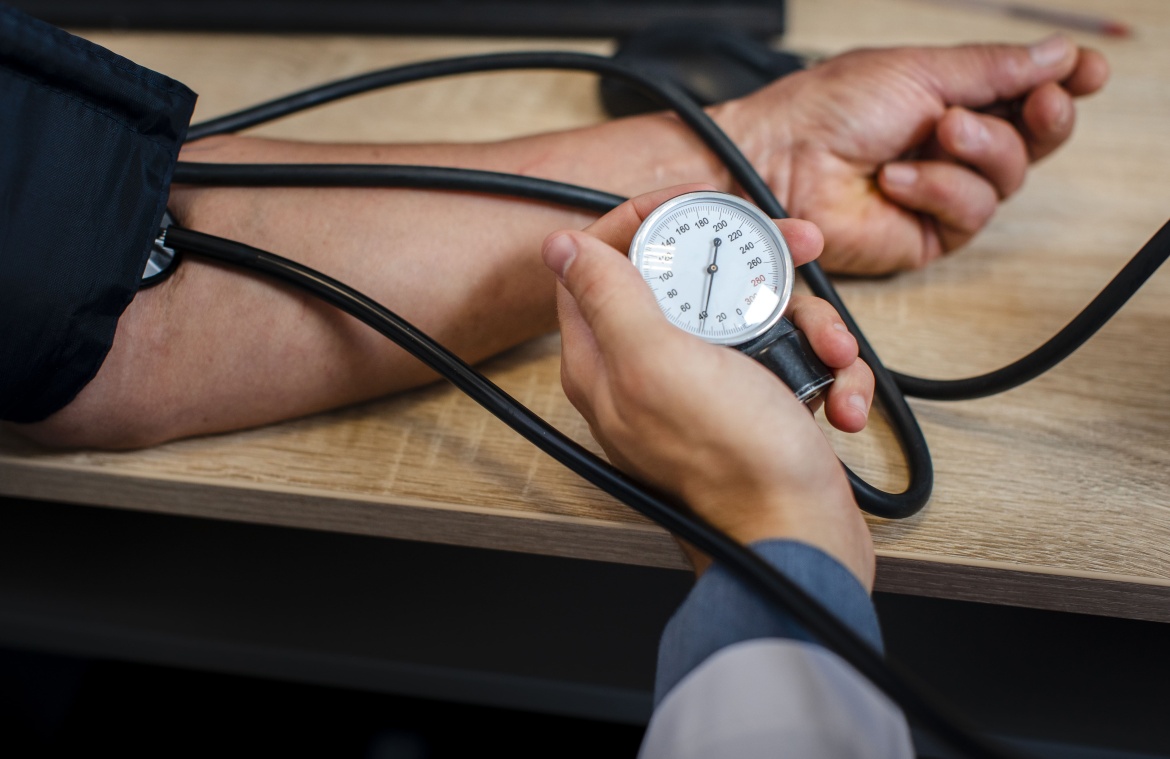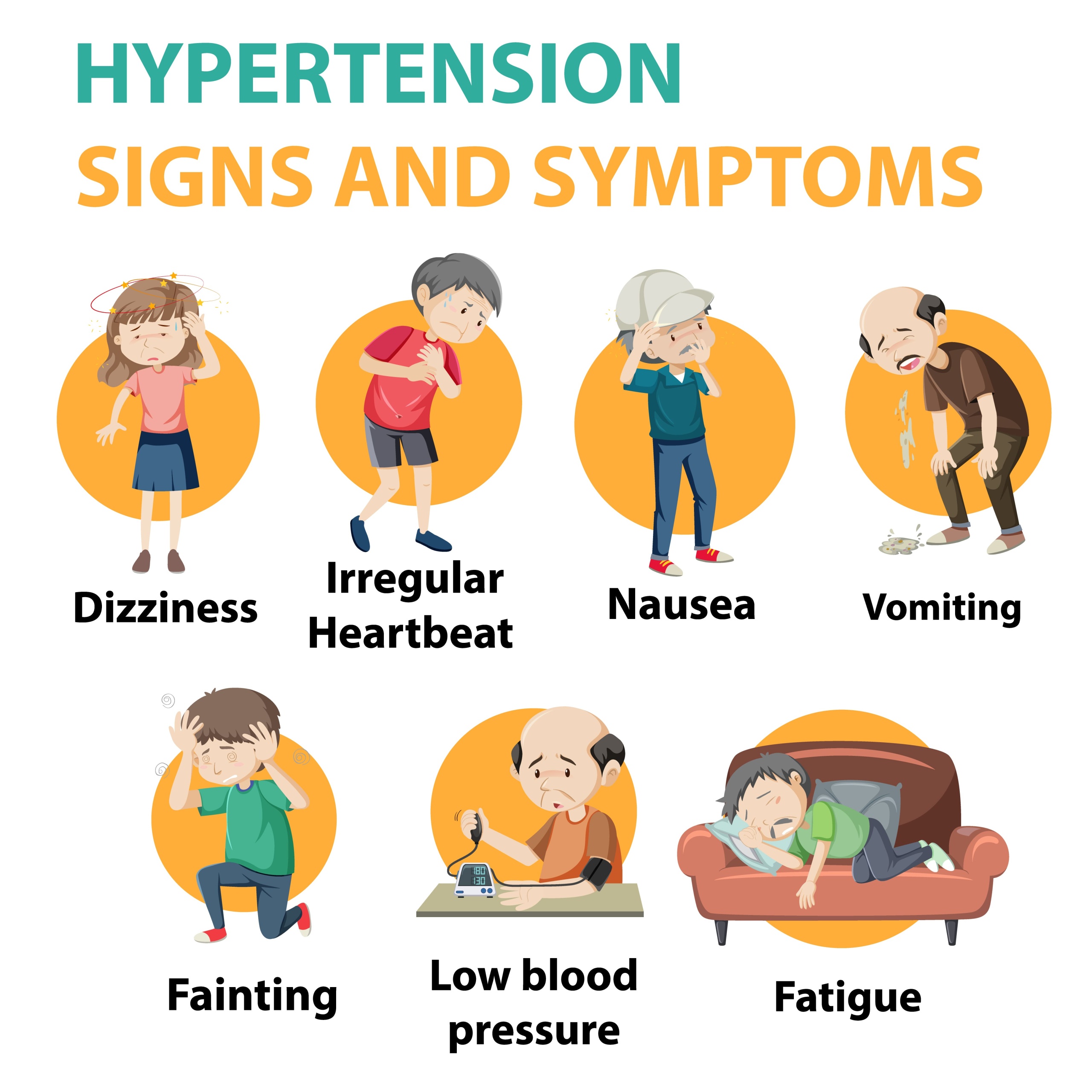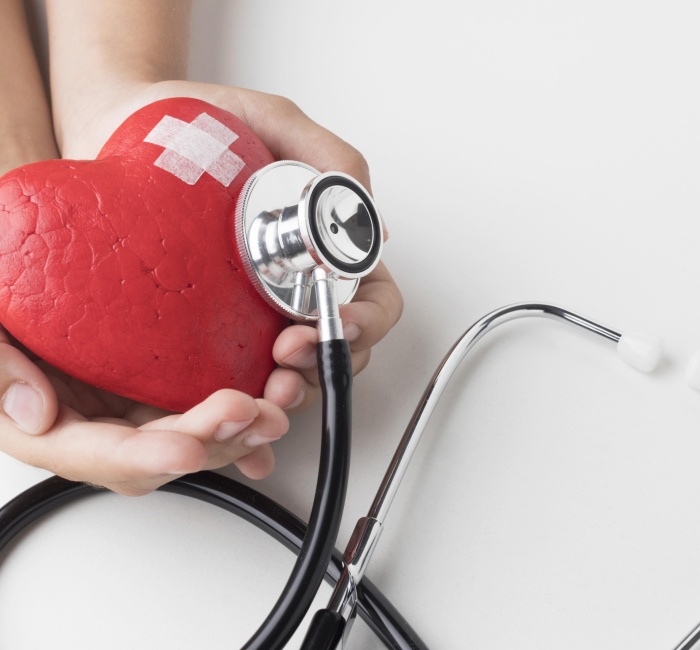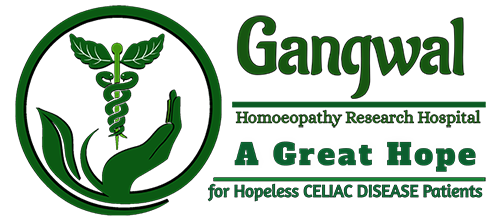
Blood Pressure
Blood pressure (BP) is the pressure exerted by circulating blood upon the walls of blood vessels. When used without further specification, “blood pressure” usually refers to the arterial pressure in the systemic circulation. It is usually measured on a person’s upper arm. It is one of the vital signs along with respiratory rate, heart rate, oxygen saturation, and body temperature. Normal resting blood pressure in an adult is approximately 120/80 mm Hg.
Blood pressure varies depending on the situation, activity, and disease states. It is regulated by the nervous and endocrine systems. Blood pressure that is low due to a disease state is called hypotension, and pressure that is consistently high is hypertension. Both have many causes which can range from mild to severe. Both may be of sudden onset or of long duration. Long-term hypertension is a risk factor for many diseases, including kidney failure, heart disease, and stroke. Long-term hypertension is more common than long-term hypotension in Western countries. Long-term hypertension often goes undetected because of infrequent monitoring and the absence of symptoms.

High blood Pressure
High blood pressure, or hypertension, is a disease. Even though it typically has no symptoms, HBP can have deadly health consequences if not treated.
High Blood Pressure Symptoms
High blood pressure usually causes no symptoms and high blood pressure often is labeled “the silent killer.” People who have high blood pressure typically don’t know it until their blood pressure is measured.
Sometimes people with markedly elevated blood pressure may develop:
- Headache
- Dizziness
- Blurred vision
- Nausea and vomiting
- Chest pain and shortness of breath.
People often do not seek medical care until they have symptoms arising from the organ damage caused by chronic (ongoing, long-term) high blood pressure.
The following types of organ damage are commonly seen in chronic high blood pressure:
- Heart attack
- Heart failure
- Stroke or transient ischemic attack (TIA)
- Kidney failure
- Eye damage with progressive vision loss
- Peripheral arterial disease causing leg pain with walking (claudication)
- Outpunching of the aorta is called aneurysm
About 1% of people with high blood pressure do not seek medical care until the high blood pressure is very severe, a condition known as malignant hypertension.


Low Blood Pressure
Hypotension is the medical term for low blood pressure (less than 90/60).
A blood pressure reading appears as two numbers. The first and higher of the two is a measure of systolic pressure, or the pressure in the arteries when the heart beats and fills them with blood. The second number measures diastolic pressure, or the pressure in the arteries when the heart rests between beats.
Optimal blood pressure is less than 120/80 (systolic/diastolic). In healthy people, low blood pressure without any symptoms is not usually a concern and does not need to be treated. But low blood pressure can be a sign of an underlying problem — especially in the elderly — where it may cause inadequate blood flow to the heart, brain, and other vital organs.
However, low blood pressure can sometimes mean there’s not enough blood flowing to your brain and other vital organs, which can lead to symptoms such as:
Chronic low blood pressure with no symptoms is almost never serious. But health problems can occur when blood pressure drops suddenly and the brain is deprived of an adequate blood supply. This can lead to dizziness or lightheadedness. Sudden drops in blood pressure most commonly occur in someone who’s rising from a lying down or sitting position to standing. This kind of low blood pressure is known as postural hypotension or orthostatic hypotension. Another type of low blood pressure can occur when someone stands for a long period of time. This is called neurally mediated hypotension.
The risk of both low and high blood pressure normally increases with age due in part to normal changes during aging. In addition, blood flow to the heart muscle and the brain declines with age, often as a result of plaque buildup in blood vessels. An estimated 10% to 20% of people over age 65 have postural hypotension.









